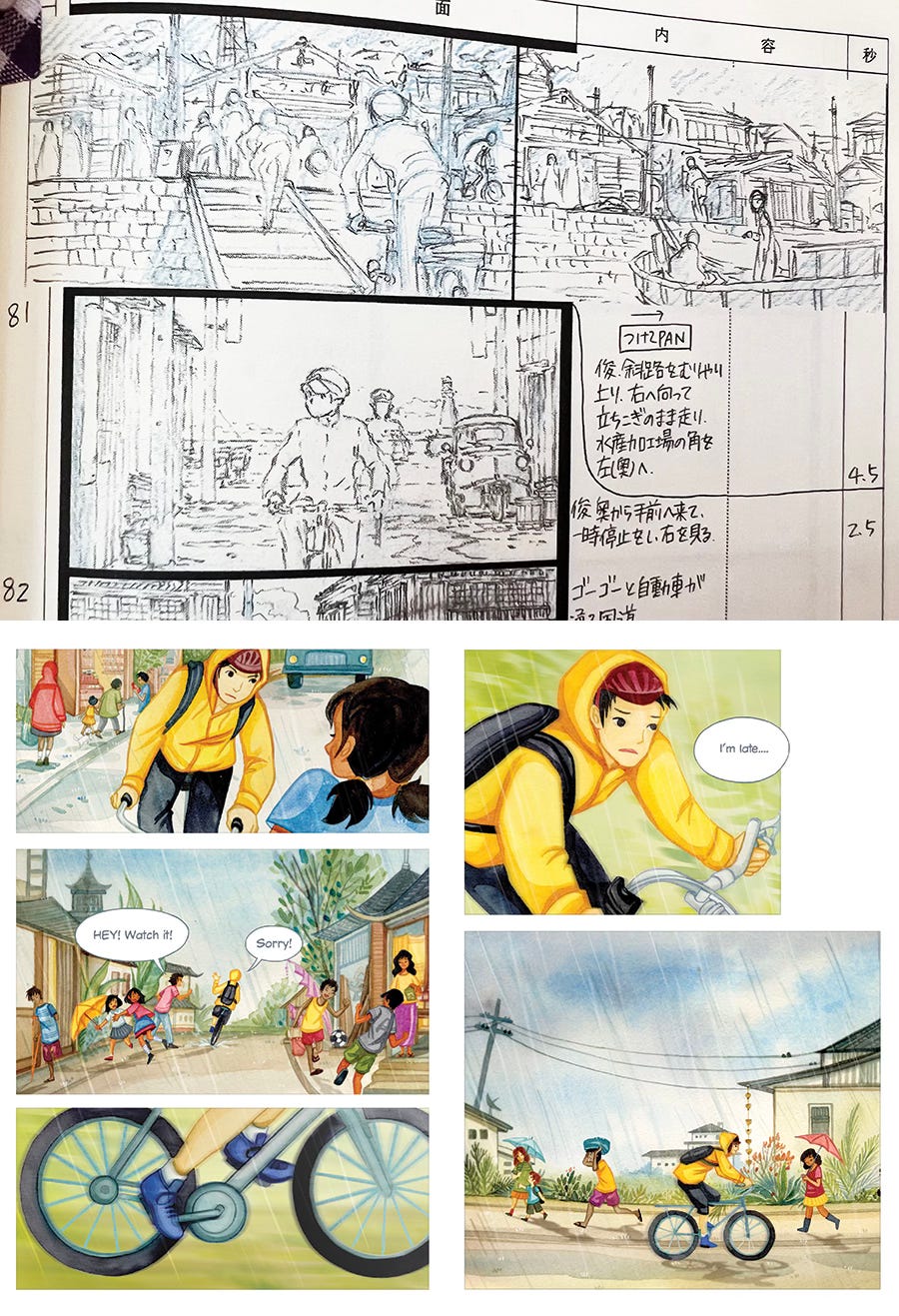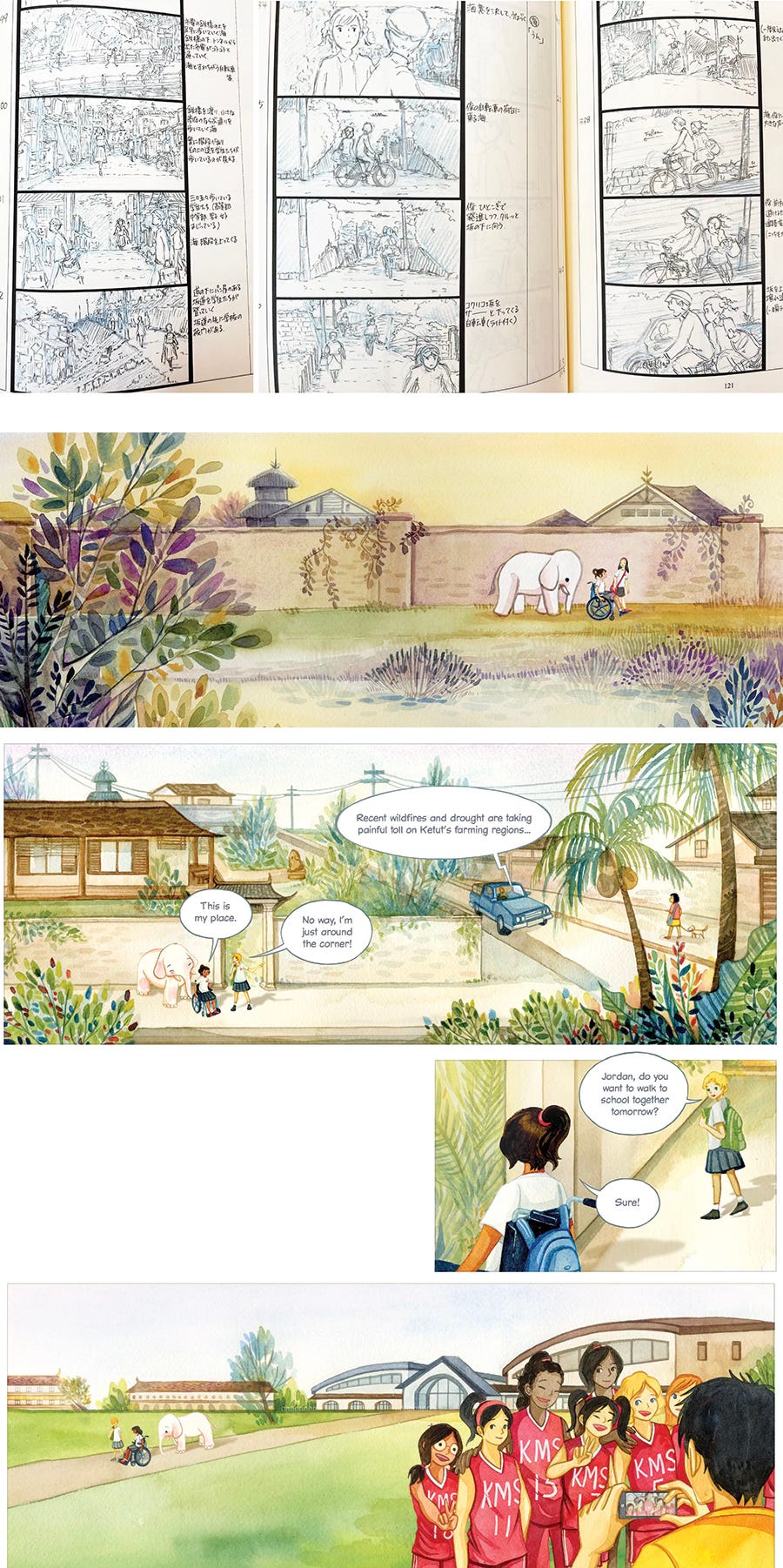Years ago, at the beginning of my author career, I promised myself that if my book ever got translated into other languages, I'd celebrate that moment with all my heart. I'm super excited about the release of Marshmallow et Jordan, so I can't help but share more stories about the book.
I created this Studio Ghibli playlist to enhance your reading experience. Play it in the background and enjoy!

Marshmallow and Jordan hold a special place in my heart, not just because it's my debut but also because it's a celebration of my childhood. I delve into how my personal memories and family dynamics have influenced the narrative in my previous post. From an artistic perspective, the book is a heartfelt homage to the legendary filmmaker Hayao Miyazaki and the iconic Studio Ghibli. As a child, my friends and I eagerly anticipated the end of exams, which meant we could rush to the cinema to catch the latest summer release from Studio Ghibli. This book is my way of sharing that joy and nostalgia.
When I started drafting for Marshmallow and Jordan, I knew I wanted the book's "cinematography" direction to have the heartwarming, pure, innocent joy and charm of a classic Ghibli film - a simple story celebrating the spirit of childhood, like My Neighbor Totoro!

I went for a classic film style to create a cozy vibe and didn't use modern fancy camera angles that need drones or computer effects. I like how Ghibli films use quiet moments when characters travel to introduce the world and set the mood.

In Up From the Poppy Hill, they use repetitive scenes of the main characters going to and from school to show changes in their relationship and inner emotions. It's a simple and elegant technique that gives the audience moments to feel, breathe, and resonate with the characters in between all the action. I used similar ideas in Marshmallow and Jordan to show the shift in Jordan's relationship with her friends, the bittersweet feelings of new joys, and the loss of old friendships.
And food! Like many Ghibli fans, I've always adored Ghibli's food scenes. You can do so much with mouth-watering food scenes - use food as visual symbolism to introduce the cultural backdrop of the story, create bonding between characters, share intimate moments, and give the audience ASMR moments. LOL!

Dialogue-heavy scenes are pretty easy to draw, but keeping them engaging is a challenge. Too much talking back and forth can make them boring and slow the story. Plus, visually, it's just a bunch of talking heads, which isn't very interesting. The dialogue needs to balance with the characters' actions to keep a long conversation engaging. How the characters act and perform becomes really important to keep the story moving. I find a lot of inspiration from studying Ghibli's storyboard to use characters' expressions to frame long dialogue sequences and bring the story to life.
We will end the post with one of my favorite scenes from Totoro, which inspired me to create Marshmallow's dance sequence choreography!
A little secret: I would do the Totoro dance with Piglet in my garden after planting to help it grow!
Click the link to read all Marshmallow & Jordan postings.







This Jesus looks like a North European-another White guy. Didn’t the original come from Jewish heritage in the Middle East?